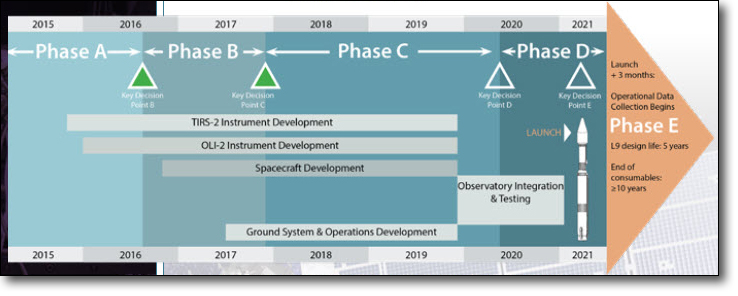
In 2025, remote work isn't just a trend; it's how things are done. It's predicted that 70% of people will work from home at least five days a month. Quite a change from the old office routine, right? As we adjust to this new way of working, it's important to look at what makes remote work great for both companies and employees. Companies can use this setup to their advantage, while employees can enjoy more job satisfaction and better productivity. Technology is a big part of making this all work smoothly, keeping everyone connected. But how do we make sure remote work stays successful in the long run? Let's explore how innovation, smart strategies, and a focus on people can help us thrive in this era of remote work.
Summary: Dieser Artikel beschreibt die strategischen Vorteile und technologischen Aspekte von Remote People Operations im Jahr 2025 und wie Organisationen diese nutzen können, um zukunftssicher zu sein. Er behandelt auch mitarbeiterzentrierte Vorteile und häufig gestellte Fragen zu diesem Thema.
Understanding Remote People Operations in 2025
Definition and Importance of Remote People Operations
Remote People Operations is about managing and enhancing HR processes for teams dispersed across various locations. It ensures coordination, fosters a strong culture, and supports employees wherever they are. By 2025, remote work will not merely be a temporary solution or a trendy perk; it will be integral to how companies attract and retain talent.
Key Benefits of Remote Work:
- Access to a larger talent pool
- Improved employee retention
- Cost reduction
- Enhanced diversity
People Operations, particularly for remote teams, emphasizes a people-first approach. It aims to improve employees' work experiences, maintain engagement, and foster growth and retention through the intelligent use of data. Supporting remote and hybrid work is crucial, addressing challenges such as communication gaps, team spirit, collaboration, and ensuring everyone has the necessary resources.
Key Components of Remote People Operations
Digital Recruitment and Onboarding for Remote Teams
Effective recruitment and onboarding for remote workers are vital. They ensure that new hires feel integrated from the outset. Leveraging HR analytics and insights can significantly aid in keeping remote employees engaged, performing well, and committed to the company.

Enhancing Employee Engagement and Communication
Remote People Operations must address the communication challenges inherent in remote work. Ensuring seamless collaboration, timely information sharing, and maintaining a sense of connection is essential. Tools like Slack and Microsoft Teams are crucial for real-time communication and teamwork.
Performance Management and Development in Remote Work
For remote workers, flexible work policies, mental health support, and initiatives for diversity, equity, and inclusion are essential. Additionally, managing logistics, such as ensuring everyone has the right tools and accommodating different time zones, is important. Best practices include providing employees with dedicated workspaces, structured routines, and robust tech infrastructure, including cybersecurity and cloud access.

Strategic Benefits of Remote People Operations for Organizations
Global and Diverse Talent Pool Access
With remote people operations, companies can hire from anywhere, not just their local area. This means they can tap into a much bigger pool of candidates and bring in more diverse voices. Diversity isn't just a buzzword; it sparks fresh ideas and makes company culture richer.
Take GitLab for example. They've got team members in over 65 countries, showing how global talent can be a real asset.

Cost Savings and Operational Efficiency
Going remote can save companies a lot of money. Think about it: no need to pay for big office spaces or utilities. This extra cash can be put to better use elsewhere in the business. Plus, hiring from regions with lower living costs can help manage salaries without skimping on talent.
Remote work also boosts efficiency by cutting down on office distractions and letting people work where they're most productive. But, to keep things running smoothly, companies need to invest in remote leadership and the right tools. GitLab, for instance, is proof of this efficiency, with each staff member handling 65 support tickets a month.
Boosted Employee Productivity and Performance
Remote work setups can really boost how well employees do their jobs. When people have a good work environment and feel supported, they're happier and more engaged. Flexible work policies and mental health resources play a big part in this.
Data-driven decisions help align workforce planning with business goals, improving overall performance. Strong remote operations create inclusive cultures that keep employees motivated and less likely to leave. Remote coordinators are key to shaping this culture, handling hiring, onboarding, and support across teams. Google's People Operations team, for example, used data to extend maternity leave, improving retention and satisfaction.
Statistics from Allied OneSource show that 76% of hybrid workers and 85% of fully remote workers enjoy a better work-life balance, leading to higher retention and less burnout. Plus, according to Vena Solutions, remote work can save companies at least $20,000 per employee each year, with around 60% of employees reporting they're more productive in remote or hybrid roles.
In short, remote people operations offer big perks: access to diverse talent, cost savings, and better employee productivity. By embracing this model, companies can thrive in the competitive global market.
Employee-Centric Benefits in Remote People Operations
Flexibility and Work-Life Balance in Remote People Operations
By 2025, flexible work arrangements have become a top perk, with nearly 95% of workers enjoying flexible schedules. This includes:
- Remote work
- Hybrid setups
- Compressed workweeks
These arrangements give employees the freedom to choose their optimal work environment and hours. Additionally, more employers are offering choice-based benefits and lifestyle spending accounts, allowing employees to tailor their benefits packages. This customization enables them to focus on personal priorities, such as:
- Fitness
- Learning new skills
- Setting up a home office
Adapting to new work styles is essential, so benefits programs need to support remote and hybrid teams while meeting the needs of different generations.
For instance, a US-based tech company might allow staff to choose between fully remote, hybrid, or in-office work. This could be paired with a benefits platform where employees can spend on personalized perks like mental health apps, gym memberships, or childcare support.
Mental Health and Well-Being Support in Remote Work
In 2025, mental health benefits remain a significant focus within employee perks. Approximately 45% of employers offer employee assistance programs that go beyond traditional counseling, incorporating:
- Coaching
- Text therapy
Employers provide a variety of mental health resources, including:
- In-person counseling (29%)
- Digital or in-person stress management programs (54%)
- Efforts to reduce the stigma around behavioral health care (46%)
There's a shift towards wellbeing initiatives that genuinely impact employees' lives, with an emphasis on measurable results rather than merely having programs for appearance's sake.

For example, a multinational company might provide employees access to a mental health platform featuring:
- Text therapy
- Personalized coaching
- Stress management workshops
- Internal campaigns to normalize seeking mental health support
These initiatives are tracked for engagement and effectiveness, ensuring they truly benefit employees.
Technology-Enabled Remote People Operations
AI and Automation in Remote HR
In remote HR work, AI and automation are pivotal in streamlining processes and allowing HR teams to focus on strategic initiatives. AI systems efficiently manage routine tasks such as payroll, benefits, and candidate screening. This automation liberates HR professionals to infuse empathy and inspiration into their roles, enhancing the human aspect of management.
For instance, remote maintenance workers can utilize augmented-reality glasses to receive live instructions, thereby improving both performance and safety. This synergy of technology and human effort fosters innovation, collaboration, and job satisfaction, ultimately benefiting the business beyond mere productivity gains. Discover more about AI and automation in HR and their transformative impact.
Data Analytics for Remote HR Decision Making
Data analytics and AI revolutionize decision-making in remote HR. By leveraging data, HR teams can identify trends, monitor performance, and assess engagement levels. This data-driven approach facilitates informed decision-making and aligns employee development with company objectives, enhancing satisfaction and retention.

Technology platforms simplify communication and performance tracking, even for remote or hybrid teams, enabling effective workforce management. HR serves as a strategic partner to leadership, integrating insights on systems, people, and technology. Learn how HR technology employs data analytics to optimize workforce strategies.
In conclusion, the integration of AI, automation, and data analytics in remote HR not only streamlines operations but also enhances the human dimension of management. By focusing on strategic tasks and informed decision-making, companies can drive innovation and employee satisfaction, leading to improved business outcomes.
Future-Proofing Remote People Operations
Enhancing Resilience in Remote People Operations
With remote work becoming the norm, businesses need to focus on resilience and risk management to keep operations running smoothly. Hybrid work models, which blend remote and in-office work, have become common due to their ability to boost flexibility and productivity. They also help address challenges like team cohesion.
AI and automation are making significant impacts in this area. Tools such as smart scheduling assistants and real-time transcription services are streamlining workflows and increasing productivity. This technological shift is crucial for maintaining innovation and agility within companies.

The role of people operations is evolving as well. Transitioning from traditional HR, it now encompasses more strategic roles aimed at keeping employees engaged, developing their skills, and ensuring retention. By leveraging data-driven analytics, companies can craft flexible work policies tailored to different teams or functions, thereby attracting and retaining talent. Additionally, prioritizing employee well-being and mental health through wellness programs is essential for building strong, productive remote teams.
Successful Remote People Operations: Case Studies
Several companies are at the forefront of adapting to remote work. For instance, Allstate and Cloudflare have embraced hybrid work models, allowing teams to determine their own schedules and the frequency of in-person meetings. This approach has resulted in happier and more productive employees. They have also integrated AI-driven tools to streamline operations and enhance communication among remote teams.
By shifting from traditional HR to a people operations mindset, these companies have invested in strategies that prioritize employees, such as utilizing data analytics and mental health programs. This focus has led to increased employee engagement and retention. Organizations that emphasize practical manager training are better equipped to manage hybrid teams, fostering team cohesion and adaptability.

These strategies demonstrate that empowering teams with control over their work and prioritizing mental health and development can build resilience and mitigate risks in a remote workforce.
For more insights, explore the following resources:
FAQ Section
Impact of Remote Work on Employee Productivity and Performance
Remote work changes how productive and effective employees can be, for better or worse. People operations teams are key in tackling the unique challenges remote and hybrid workers face. They help keep the company culture alive, make collaboration easier, and build relationships despite the distance. By using digital-first communication, virtual recognition programs, and remote-friendly policies, these teams ensure all employees have a fair experience, no matter where they are. These efforts create a space where employees can do their best work, boosting productivity and engagement.
Using data from employee surveys and HR metrics, companies can spot areas needing improvement in retention, satisfaction, engagement, and productivity. A smart approach to people operations makes sure team members' experiences match the organization's goals, which can really lift productivity and engagement in remote settings. For example, virtual team-building activities and engagement surveys can keep an eye on how happy remote workers are, helping companies tweak policies to boost productivity and inclusiveness.
Cost Savings of Remote People Operations for Employers
The research doesn't put a number on cost savings, but people operations focus on better workforce management, which helps cut costs by improving retention and reducing turnover in remote teams. By rolling out remote-friendly policies and digital communication tools, companies can save on costs tied to physical office spaces and on-site resources.

Improving employee experience and engagement can also lower costs from absenteeism and low productivity. For instance, supporting a hybrid workforce and investing in digital collaboration tools can reduce office space expenses while keeping productivity up. This lets businesses use resources more wisely, possibly investing in tech that supports a distributed workforce.
Supporting Remote Workers' Mental Health and Well-being
Taking care of remote workers' mental health is crucial for keeping them productive and engaged. People operations craft strategies to create inclusive settings where remote employees have fair access to resources, opportunities, and decision-making. Virtual recognition programs and digital-first communication make remote workers feel appreciated and connected, which is good for their mental health.
People operations teams use surveys and HR metrics to keep track of team sentiment and tweak support strategies as needed, tackling mental health issues head-on. A people-focused approach aligns personal growth and well-being with company goals, leading to a healthier and more engaged remote workforce. Offering virtual mental health resources, regular well-being check-ins, and ensuring remote employees have fair access to development opportunities are all effective ways to support mental health in a remote work setup.
People operations play a strategic role in keeping employees engaged, nurturing company culture remotely, and using technology for collaboration and performance management. By focusing on culture, engagement, and employee experience, they help companies manage the challenges of remote work, improving productivity, saving costs, and supporting mental health.